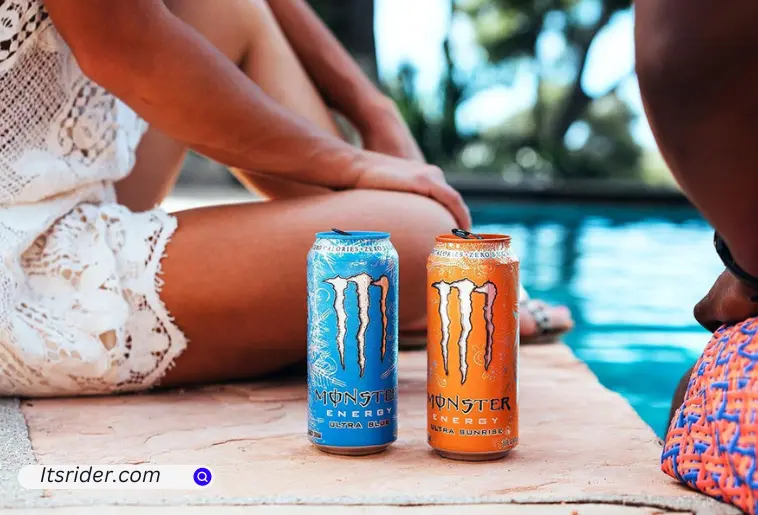Introduction
In the ever-evolving landscape of beverages, one intriguing entry has been the fusion of energy drinks with alcohol. This blend, known as “Monster Alcohol,” represents a significant trend, combining the stimulating effects of energy drinks with the intoxicating properties of alcohol. While the concept may sound novel and appealing, it raises numerous health, safety, and societal concerns that warrant a closer examination.
The Birth of Monster Alcohol
The idea of mixing alcohol with energy drinks is not entirely new. Over the past few decades, various products have emerged in the market, often targeting younger consumers looking for an extra kick in their social drinks. Monster Energy, a popular energy drink brand, has expanded its product line to include alcoholic beverages. This venture aims to capture a segment of the market that enjoys the buzz from energy drinks and the relaxation from alcohol.
Ingredients and Formulation
Monster Alcohol typically contains a blend of caffeine, taurine, and other energy-boosting ingredients found in traditional Monster Energy drinks, combined with a certain percentage of alcohol, usually ranging from 4% to 7% by volume. The alcohol content can vary depending on the specific product and region. This combination is designed to provide a unique drinking experience by simultaneously stimulating and intoxicating the consumer.
Marketing and Target Audience
Monster Alcohol is predominantly marketed towards young adults, particularly those aged 21 to 35. The branding and packaging often emphasize a high-energy, rebellious lifestyle, appealing to college students and young professionals. Advertising campaigns for these products frequently feature extreme sports, music festivals, and other high-adrenaline activities, reinforcing the connection between the beverage and a vibrant, active lifestyle.
Read More: Human Gathering Cults A Psychological Perspective
Health Implications
Immediate Effects
The immediate effects of consuming Monster Alcohol can be both stimulating and intoxicating. The caffeine and other stimulants can mask the depressant effects of alcohol, leading consumers to underestimate their level of intoxication. This can result in higher consumption rates and an increased risk of alcohol poisoning, accidents, and other adverse outcomes.
Long-term Health Risks
Long-term consumption of Monster Alcohol poses several health risks. Regular intake of high-caffeine and high-alcohol beverages can lead to cardiovascular problems, including increased heart rate and blood pressure. Additionally, the combination can strain the liver and kidneys, potentially leading to chronic health issues over time. Mental health can also be affected, with increased risks of anxiety, depression, and sleep disorders.
Regulatory Concerns
The sale and distribution of Monster Alcohol have faced significant regulatory scrutiny. Health authorities in several countries have raised concerns about the safety of these products, leading to stricter regulations and, in some cases, outright bans. In the United States, for instance, the FDA has taken steps to regulate the marketing and labeling of such beverages to ensure that consumers are adequately informed about the potential risks.
Social and Cultural Impact
Influence on Drinking Culture
The advent of Monster Alcohol has influenced drinking culture, particularly among young adults. The combination of energy and alcohol has become a popular choice at parties, clubs, and social gatherings, contributing to a culture of binge drinking. This trend has sparked debates about the role of such beverages in promoting irresponsible drinking behaviors and their impact on public health.
Peer Pressure and Social Norms
Peer pressure and social norms play a significant role in the consumption of Monster Alcohol. The perception that these drinks are trendy and socially acceptable can lead to increased consumption, especially among impressionable young adults. Social media and advertising further amplify this effect by showcasing the beverages as integral to a fun and exciting lifestyle.
Case Studies and Incidents
Several high-profile incidents involving Monster Alcohol have brought attention to the potential dangers of these beverages. For example, there have been cases of alcohol poisoning, accidents, and even fatalities linked to the consumption of energy-alcohol drinks. These incidents have fueled public debate and led to calls for stricter regulations and better consumer education.
Alternatives and Safer Choices
For those seeking a balance between energy and relaxation, there are safer alternatives to Monster Alcohol. Non-alcoholic energy drinks or low-alcohol beverages can provide a more moderate experience without the heightened risks. Additionally, educating consumers about the dangers of mixing alcohol with stimulants can encourage more responsible drinking habits.
Read More: Chelsea Acton Famous Parenting Journey Tips
Conclusion
Monster Alcohol represents a fascinating yet controversial segment of the beverage industry. While it offers a unique combination of stimulation and intoxication, it also poses significant health and safety risks. As the popularity of these drinks continues to grow, it is crucial for consumers to be aware of the potential dangers and for regulators to ensure that these products are marketed and consumed responsibly. The ongoing dialogue between industry stakeholders, health authorities, and the public will be key in shaping the future of Monster Alcohol and similar products.
